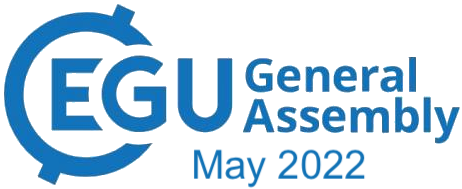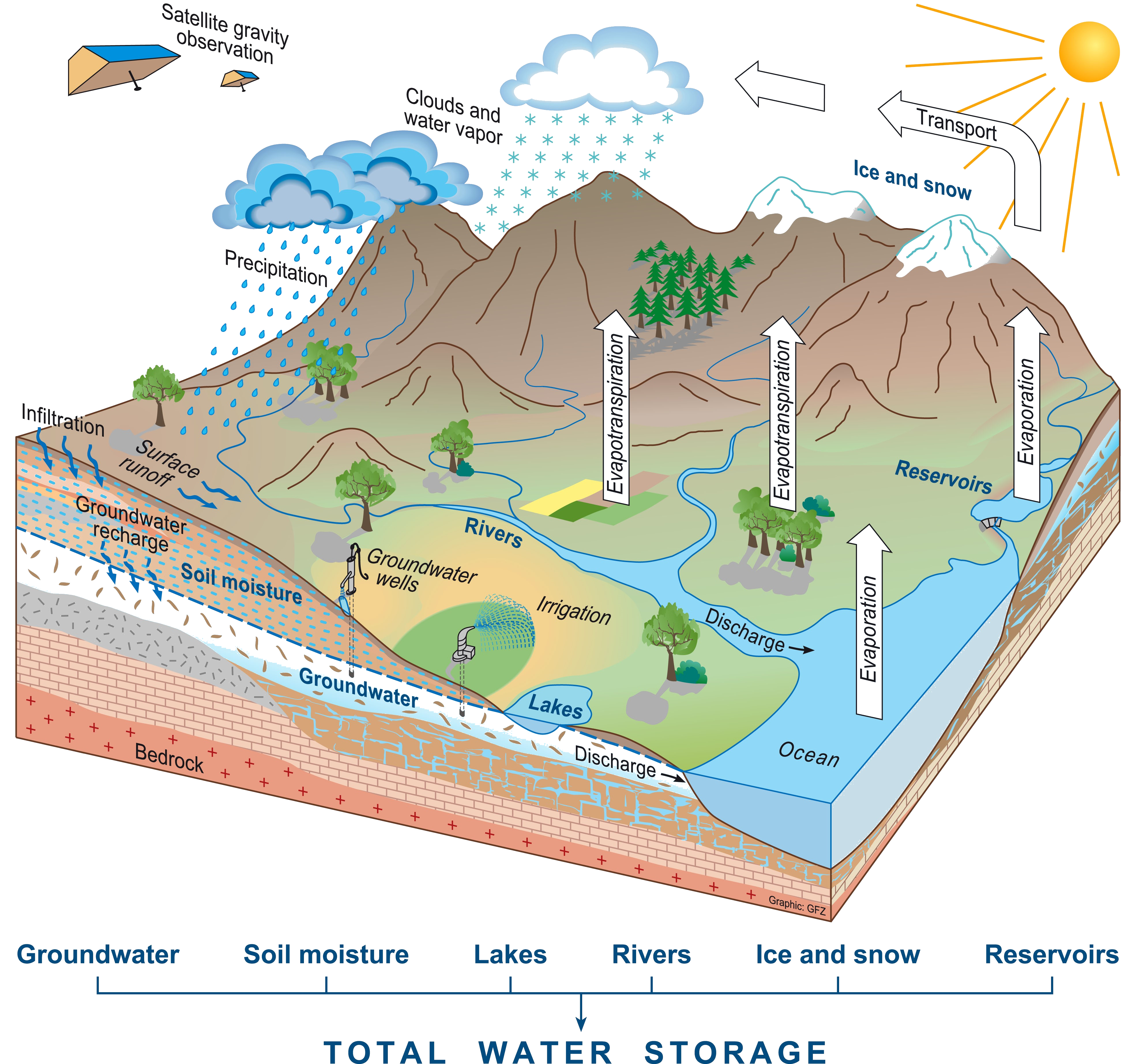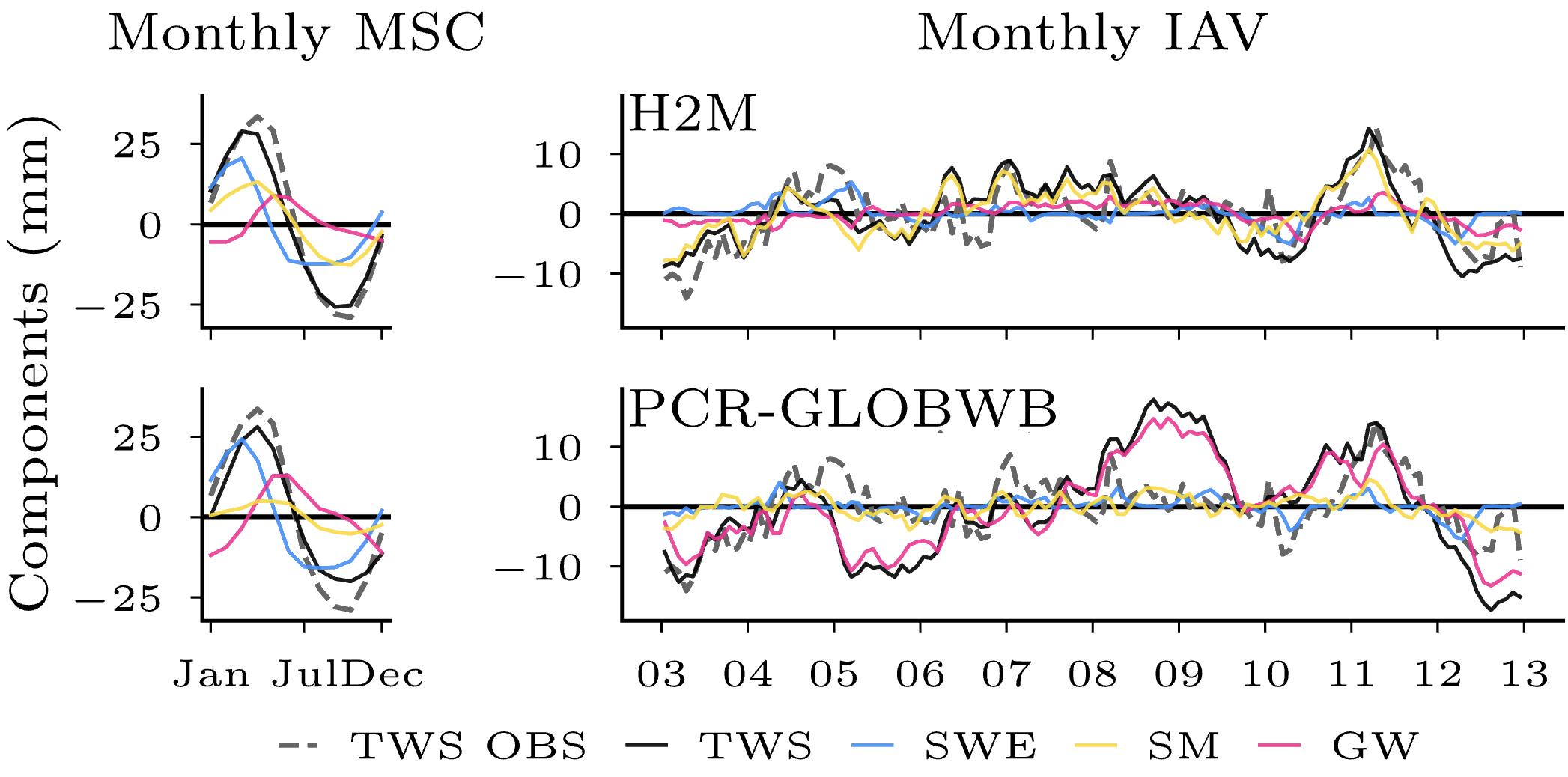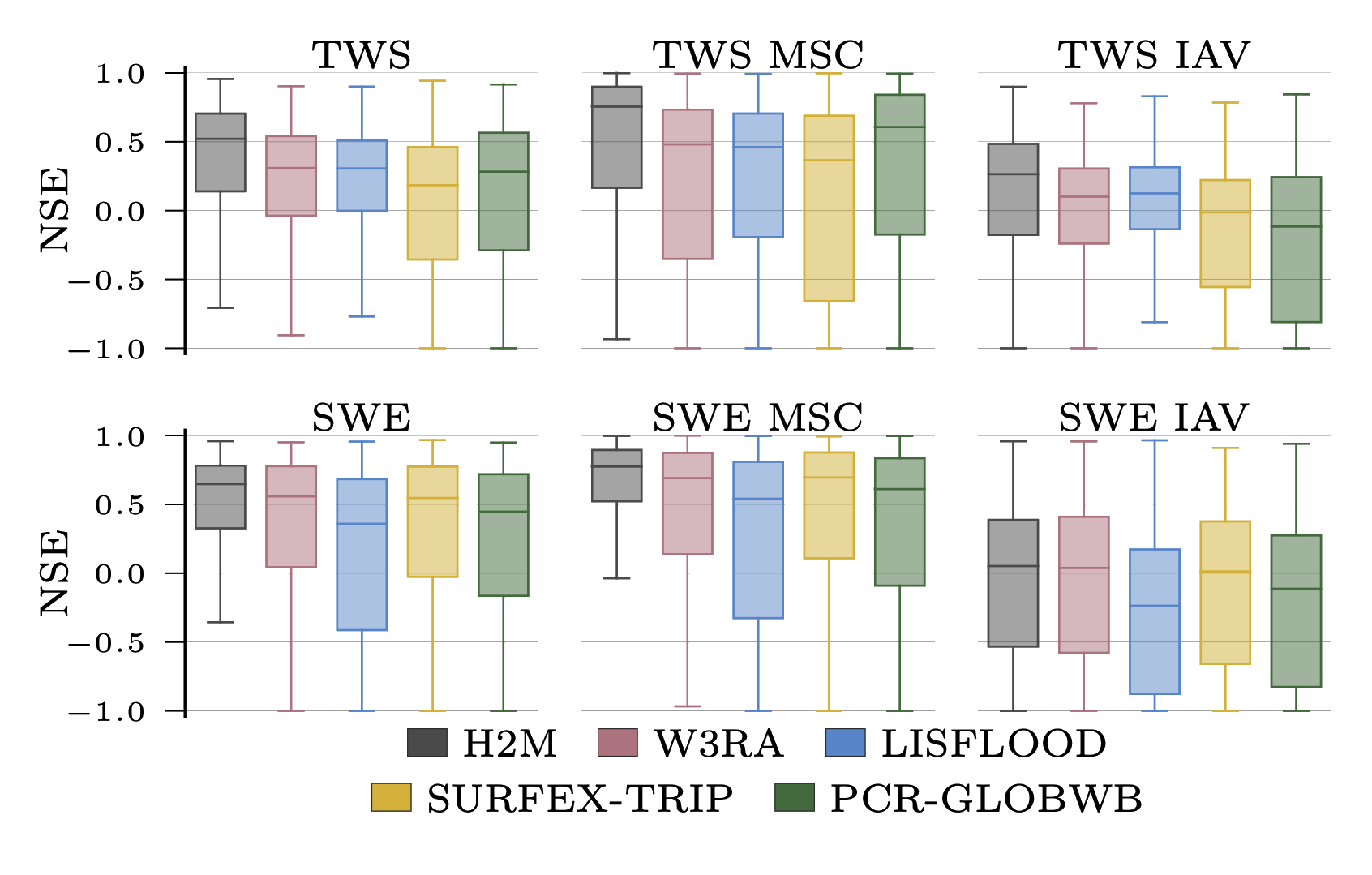Estimating global terrestrial water storage components by a physically constrainedrecurrent neural network$^*$
$^*$Kraft et al. (2022), Towards hybrid modeling of the global hydrological cycle hess-26-1579-2022
Basil Kraft¹ ² (bkraft@bgc-jena.mpg.de), Martin Jung¹, Marco Körner², Sujan Koirala¹, Markus Reichstein¹
1) MPI for Biogeochemistry, Jena, Germany 2) TUM Dept. Aerospace and Geodesy, Munich, Germany


Session HS2.5.2: Recent advancement in estimating global, continental and regional scale water balance components
 |
||
| Global Diagnostic Modelling Group Max Planck Institute for Biogeochemistry | Computer Vision Research Group Technical University of Munich | European Research Council (ERC) Synergy Grant Understanding and modeling of the Earth system with ML |
Estimating water storages:a major challenge in hydrology

Still large uncertainties in globalhydrological models

Still large uncertainties in globalhydrological models
- Complementary approaches needed
- Make use of available EO data, e.g.,
- total water storage variations
- snow water equivalent
- evapotranspiration
- gridded runoff
Why more “data driven”?
- Knowledge may be wrong or incomplete$\rightarrow$ biases
- We have large amounts of Earth observation data$\rightarrow$ we can learn from this data
- Data driven not better but different$\rightarrow$new and complementary insights
Hybrid modeling; learning from data

Hybrid modeling: global and spatiotemporal parameters




Learned water partitioning fractions$\ $$\ $$\ $$\ $$\ $


Next steps (work in progress)
- Uncertainty-aware model
- Identify equifinalities
- Use additional constraints
- increase model complexity
- use additional data constraints
Paper doi.org/10.5194/hess-26-1579-2022
Code github.com/bask0/h2m
Simulations dx.doi.org/10.17617/3.65
![]() bkraft@bgc-jena.mpg.de
bkraft@bgc-jena.mpg.de
![]() @BasilKraft
@BasilKraft
Model performance

Hybrid modeling: equifinality

Simulated water storages$\ $$\ $$\ $$\ $$\ $
Learned water partitioning fractions$\ $$\ $$\ $$\ $$\ $
Self-paced multi-task learning
$\sigma_i$: Task uncertainty, trainable parameter
Kendall, A., Gal, Y. and Cipolla, R., 2018. Multi-task learning using uncertainty to weigh losses for scene geometry and semantics. In Proceedings of the IEEE Conference on Computer Vision and Pattern Recognition (pp. 7482-7491).